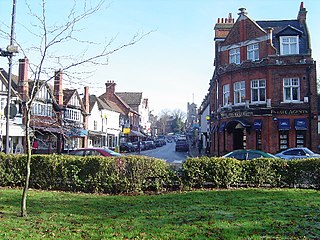
Sir William Ramsay, was a Scottish chemist who discovered the noble gases and received the Nobel Prize in Chemistry in 1904 "in recognition of his services in the discovery of the inert gaseous elements in air". After the two men identified argon, Ramsay investigated other atmospheric gases. His work in isolating argon, helium, neon, krypton and xenon led to the development of a new section of the periodic table.
John Anderson may refer to:

Sir Josiah John Guest, 1st Baronet, known as John Josiah Guest, was a Welsh engineer and entrepreneur.

Eastcote is an area established around an old village in the west of Greater London and is part of the London Borough of Hillingdon.
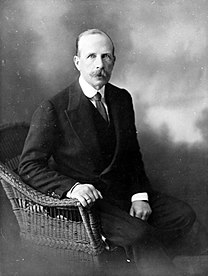
Sir William Grey Ellison-Macartney, KCMG was an Irish-born British politician, who also served as the Governor of the Australian states of Tasmania and Western Australia.
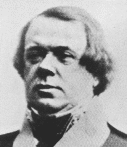
Sir Samuel George Bonham, 1st Baronet was a British colonial governor, who became the 4th Governor of the Straits Settlements and the 3rd Governor of Hong Kong.
Christopher John Laycock was a British lawyer, the founder of one of Singapore's earliest law firms, Laycock and Ong.
Sir Ellice Victor Sassoon, 3rd Baronet, GBE was a businessman and hotelier from the wealthy Baghdadi Jewish Sassoon merchant and banking family.

Clan Guthrie is a Scottish clan.
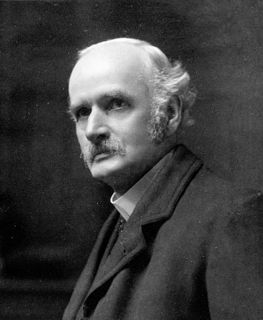
Sir Henry Jones, was a Welsh philosopher and academic.
Sir John Henderson Stewart, 1st Baronet, FRGS, DL, JP was a Scottish whisky distiller.
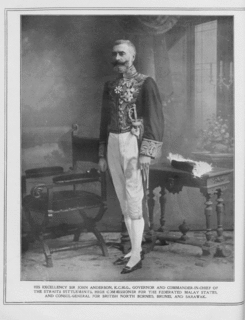
Sir John Anderson was a Scottish colonial administrator, who was once the Governor of Ceylon and Governor of Straits Settlements.
Sir Robert Abercromby, 5th Baronet of Birkenbog and Forglen, FRSE was a Scottish politician.
Lieutenant General Sir Henry Frederick Bouverie was a British Army officer.

Highgrove House, also known as High Grove House or High Grove, is a Grade II listed mansion in the suburban area of Ruislip, within the London Borough of Hillingdon. Originally built in 1750 by the Reverend John Lidgould, the house was rebuilt in 1881 by Sir Hugh Hume-Campbell following a catastrophic fire. Along with Haydon Hall and Eastcote House, Highgrove was one of the three main houses of Eastcote and eventually became a residential hostel for homeless families, run by the local council from the 1960s until 2007. An area of the estate was sold to the local council in 1935 by the then-owner Eleanor Warrender to become what is now Warrender Park. In 1975, the house was granted Grade II listed status on account of its special architectural character.

St Martin's Church is a church in the town of Ruislip, within the London Borough of Hillingdon. It has been designated since January 1950 by English Heritage as a Grade I listed building. The present chancel and nave date back to the 13th century. The church stands at the northern end of Ruislip High Street, near the Manor Farm site.

The Guthrey Centre at 126 Cashel Street, Christchurch Central City, originally the offices of Andersons Foundry and later 'Andersons Ltd, was a Category I heritage building registered by the New Zealand Historic Places Trust. The building was demolished following severe damage from the February 2011 Christchurch earthquake.
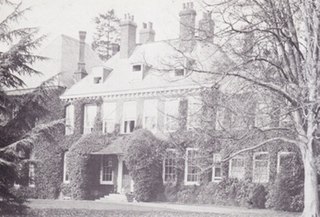
Haydon Hall was one of the three main houses of Eastcote, within what is now the London Borough of Hillingdon. The house was built in 1630 as a home for Lady Alice, Dowager Countess of Derby who had been living in Harefield. The house remained in the ownership of Lady Alice's descendants for several years, on the side of her eldest daughter. For a time the house was renamed "Eastcote Park" though was returned to the original name.

Pendley Manor is a hotel, conference and function center near Tring, Hertfordshire, UK. It is a historic country house and is grade 2 listed as an important example of Victorian architecture.


